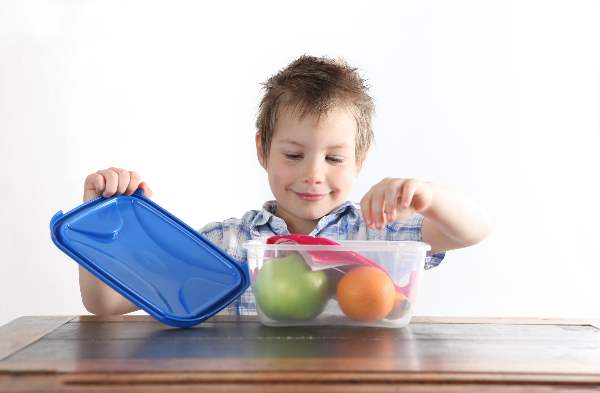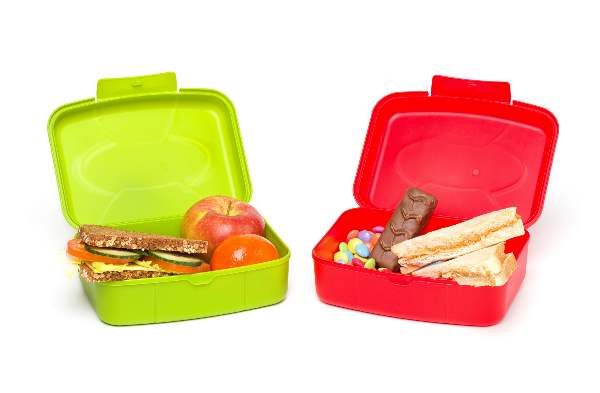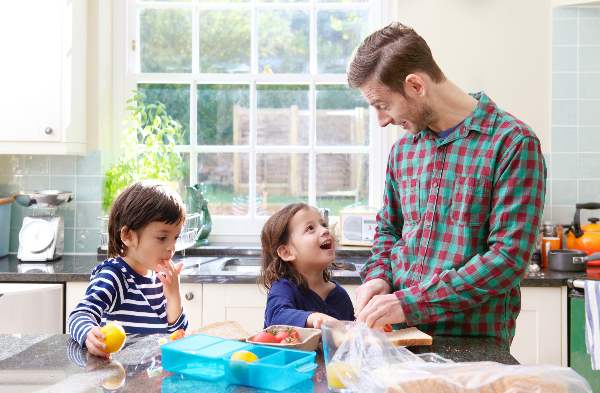Are lunch boxes unhealthy?

That time of year is once again upon us and many of you are now probably frantically chasing after your children in the morning, making sure they’re all packed and prepared for the school day ahead. For some of you, this preparation will almost certainly include packing a lunch box, however research is emerging that might paint the traditional pack lunch box in a different light.
It’s estimated that, out of the 50% of children that take pack lunch boxes to school, only 1.6% met the nutritional standards set out by the government. The statistics get even grimmer, with only 1 in 5 containing any vegetables or salad,1less than 1 in 4 lunch boxes containing enough iron and less than 1 in 5 were meeting the standards for energy, zinc or vitamin A.2
Unfortunately, when compared to the more regulated school meals, lunch boxes are surprisingly now seen as the less healthy option, with the Children’s Food Trust now stating that both primary and secondary school children bringing lunches to school are now more likely to consume sugar drinks and high fat snacks.3
Naturally, many worry that these unhealthy lunch options could be contributing to the larger problem of childhood obesity. The NHS spends, on average, £5 billion a year trying to treat obesity-related health problems, and there is a worrying trend developing with children sometimes as young as 7 being diagnosed with Type 2 diabetes.
The health risks do speak for themselves and I’m sure most of you are aware of them – premature puberty, respiratory disorders and cardiovascular disease. Children that develop these issues earlier on in life can sometimes still carry them on into adulthood so it is a worrying development. Of course many factors can contribute towards obesity – a sedentary lifestyle, genetics and hormonal imbalances are just a few!
So are packed lunch boxes really an unhealthy option? Not so long ago school meals were taking the brunt of the criticism when it came to unhealthy meals for children and arguably, many parents opt for packed lunch boxes as it allows them to regulate what their children are actually eating.
Is this then the real problem?
1https://www.theguardian.com/society/2016/sep/06/kids-school-lunchboxes-junk-food-research-england
2http://www.bbc.co.uk/newsbeat/article/37285735/most-kids-lunchboxes-still-unhealthy-research-suggests
3http://www.childrensfoodtrust.org.uk/blog/research/packed-lunches-v-school-meals-primary/
What should be going into your children’s lunch boxes?

There’s no denying it – trying to eat healthy is hard and trying to convince your children to eat healthy is even harder. Not all of you will have the time required to prepare everything out in advance and while an apple carved to look like a hedgehog might sound cute, it’s not exactly practical to implement at 0830 when you’re trying to nudge your children out the door.
Not to mention your children probably have their own ideas about what they do and don’t want to eat. You can spend your pounds on alternative snacks but at the end of the day, all you child wants is the Milky Way that costs less than 50p.
So yes, it’s difficult and sometimes compromises do have to be made. But what are the actual guidelines for what should be going into your child’s packed lunch? According to theChildren’s Food Trust, your child’s packed lunch should contain the following; a starchy food, a portion of fruit and veg, protein, dairy and a drink.4
This isn’t too difficult to achieve but it may involve a degree of preparation and couple of simple changes on your part. The biggest hurdle might be convincing your child to convert to healthier options and that’s not always easy.
How can you help your child to eat healthier?

Children can be fussy – many of them object to wholemeal bread, won’t consider eating a salad and would much rather have a packet of crisps over dipping carrots in hummus. There are workarounds you can do though. For example, if your child simply won’t take to brown bread, you could try a wrap or pita bread instead.
You will have to think outside the box, but as a starting point, I would recommend getting your children more involved with what they eat. Something as simple as baking banana bread or showing them how to cook pasta can really go a long way towards broadening their horizons.
Not only is cooking a valuable life-skill, if you can get your child more interested in food, it may make them more willing to engage with meals that they would normally turn their nose up at. It should improve their self-confidence and you’ll get a better understanding about their likes, dislikes and when a compromised can be reached.
Simple changes can make all the difference too – try to switch from chocolate to an alternative instead, even a homemade healthy slice of banana bread would be a good substitute! Fizzy drinks such as cola or lemonade should be swapped in favour of smoothies or water. If your child doesn’t like the taste of plain water, you could try getting an infuser bottle which will allow you to suffuse the water with the natural flavour of fruit.
In my next instalment of this two part series, I’ll take a look at some healthy lunch ideas for your children and how you can incorporate them into your busy routine!





 Looking for our products in a store near you?
Looking for our products in a store near you?
